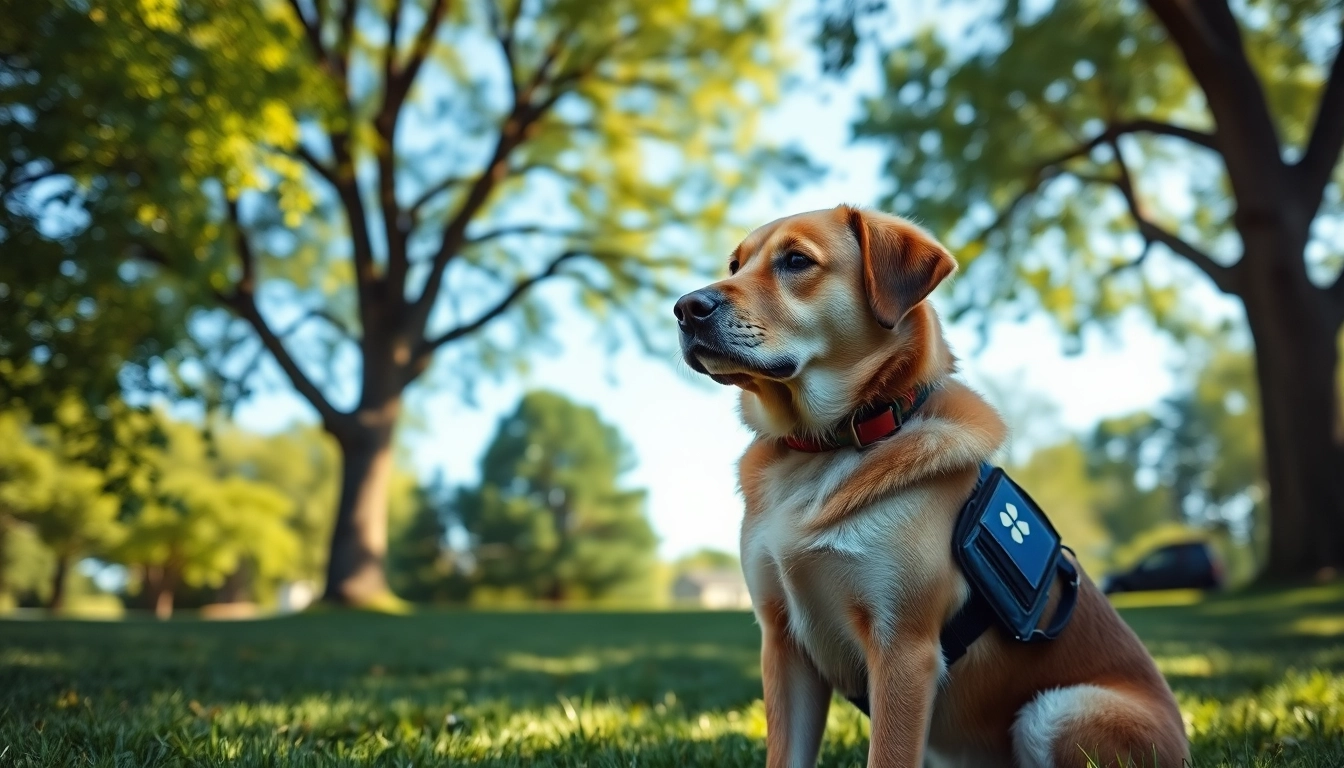Expert Service Dog Trainer Techniques to Enhance Partnership Success
Understanding the Role of a Service Dog Trainer
Definition and Responsibilities
A service dog trainer plays a crucial role in the preparation and education of dogs to support individuals with disabilities. The process of training these animals extends beyond basic commands, encompassing specific skills tailored to assist their human partners in everyday life. Responsibilities include assessing the needs of both the dog and the handler, designing individualized training programs, and ensuring that the dogs are proficient in their tasks, such as guiding the visually impaired, alerting deaf individuals to sounds, or providing support for emotional challenges.
Types of Service Dogs
Service dogs are categorized based on the disabilities they assist with. These include:
- Guide Dogs: Assist individuals with visual impairments by navigating obstacles and helping them safely traverse public spaces.
- Hearing Dogs: Alert those who are deaf or hard of hearing to important sounds like doorbells, alarms, or the phone ringing.
- Mobility Assistance Dogs: Aid individuals with physical disabilities by retrieving items, opening doors, or providing support while walking.
- Medical Alert Dogs: Trained to recognize medical conditions such as seizures or diabetic episodes, these dogs alert their handlers before an episode occurs.
- Emotional Support Dogs: Provide comfort to individuals with mental health concerns, offering companionship that aids in reducing anxiety and stress.
The Importance of Certification
Certification is critical for service dogs to ensure they are trained to meet established standards of reliability and behavior. Programs that certify service dogs require them to undergo thorough training, which affirms their capabilities and confirms their readiness to aid those in need. Additionally, certification helps in accessing public places where service dogs are needed, facilitating their integral role in the lives of their handlers.
Essential Skills for a Service Dog Trainer
Training Methods and Techniques
The effectiveness of a service dog trainer hinges on their knowledge of diverse training methods. Techniques such as positive reinforcement, clicker training, and desensitization are pivotal in creating responsive and confident service dogs. Trainers often customize these approaches to fit the individual dog’s personality and the specific needs of the handler.
Behavioral Psychology Principles
Understanding the principles of behavioral psychology greatly enhances a trainer’s ability to modify canine behavior effectively. Concepts such as operant conditioning, which involves reinforcing desired behaviors while discouraging undesired ones, are commonly implemented. Moreover, being able to read canine body language, recognizing stress signals, and knowing when to decrease training intensity can make a significant difference in a dog’s learning process.
Effective Communication with Dog Owners
Communication skills are vital for service dog trainers, as they work closely with dog owners who may be anxious or uncertain about the training process. Having the ability to explain training concepts in accessible language, providing constructive feedback, and creating a supportive environment fosters a partnership that enhances the success rate of the training. Clear communication also helps to ensure that training practices can be seamlessly transferred to the owner’s daily routines.
Steps to Becoming a Service Dog Trainer
Education Requirements
While there is no formal education requirement to become a service dog trainer, many find that pursuing a degree in animal behavior, veterinary sciences, or psychology equips them with essential knowledge. Understanding canine behavior, anatomy, and training philosophies is crucial to gaining a competitive edge in this field.
Recommended Certifications
Obtaining certification from recognized organizations can enhance a trainer’s credibility. Certifications from institutions such as the Certification Council for Professional Dog Trainers (CCPDT) or the International Association of Assistance Dog Partners signify a trainer’s commitment to the field and adherence to rigorous training standards. Trainers should also look into specialized certifications focused on service dog training to further their expertise.
Gaining Practical Experience
Practical experience in various training environments is invaluable for aspiring service dog trainers. Volunteering at local animal shelters, intern at professional training schools, or assisting established trainers can provide hands-on experience. Additionally, working directly with service dog organizations allows trainers to become familiar with a variety of disabilities and the corresponding training techniques needed to assist those individuals effectively.
Best Practices in Service Dog Training
Customizing Training Approaches
A successful service dog trainer understands that each dog and handler duo is unique. Customizing training plans to address specific needs ensures that both the dog and owner grow comfortable and confident in their working relationship. Tailoring techniques based on the dog’s temperament, the handler’s lifestyle, and the environment in which the dog will operate contributes to a more effective training regimen.
Building Trust with Service Dogs
Establishing a strong bond of trust between the trainer, the service dog, and the handler is essential. Trainers should engage in positive interactions, reward compliance, and ensure that the dog feels safe and motivated. This bond is the foundation upon which successful training is built, allowing dogs to work with their handlers without fear or hesitation.
Monitoring Progress and Adjustments
Ongoing assessment of both the dog’s learning and the handler’s comfort level is crucial throughout the training process. Regular progress evaluations allow trainers to adjust their approaches as needed, ensuring that both the dog and handler are developing positively. Utilizing tools such as milestone charts, video recordings, and behavioral logs can provide clarity on progress and help keep training on track.
Future Trends in Service Dog Training
Emerging Technologies and Training Tools
The integration of technology in service dog training offers exciting possibilities for enhancing training methodologies. Tools such as virtual reality simulations, mobile training applications, and interactive online platforms provide innovative ways to train both dogs and handlers. These technologies can facilitate remote training sessions, enhance tracking of behavioral modifications, and allow trainers to reach a broader audience.
Advocacy for Service Dog Acceptance
As service dogs become increasingly recognized as valuable partners for individuals with disabilities, advocacy efforts continue to rise. Promoting public understanding of the rights and roles of service dogs will help reduce confusion and foster a supportive environment for handlers. Trainers can contribute by participating in community outreach programs, attending workshops, or liaising with local businesses and organizations to educate them on the significance of service dogs.
Community Involvement and Resources
The role of a service dog trainer extends beyond training; it includes community engagement and building a network of resources. Connecting individuals with service dog organizations, support groups, and advocacy networks can empower handlers and enrich their and their dog’s overall experience. Trainers should stay informed about new resources, local events, and changes in laws related to service animals to ensure that they are providing the most current information to their clients.














Post Comment